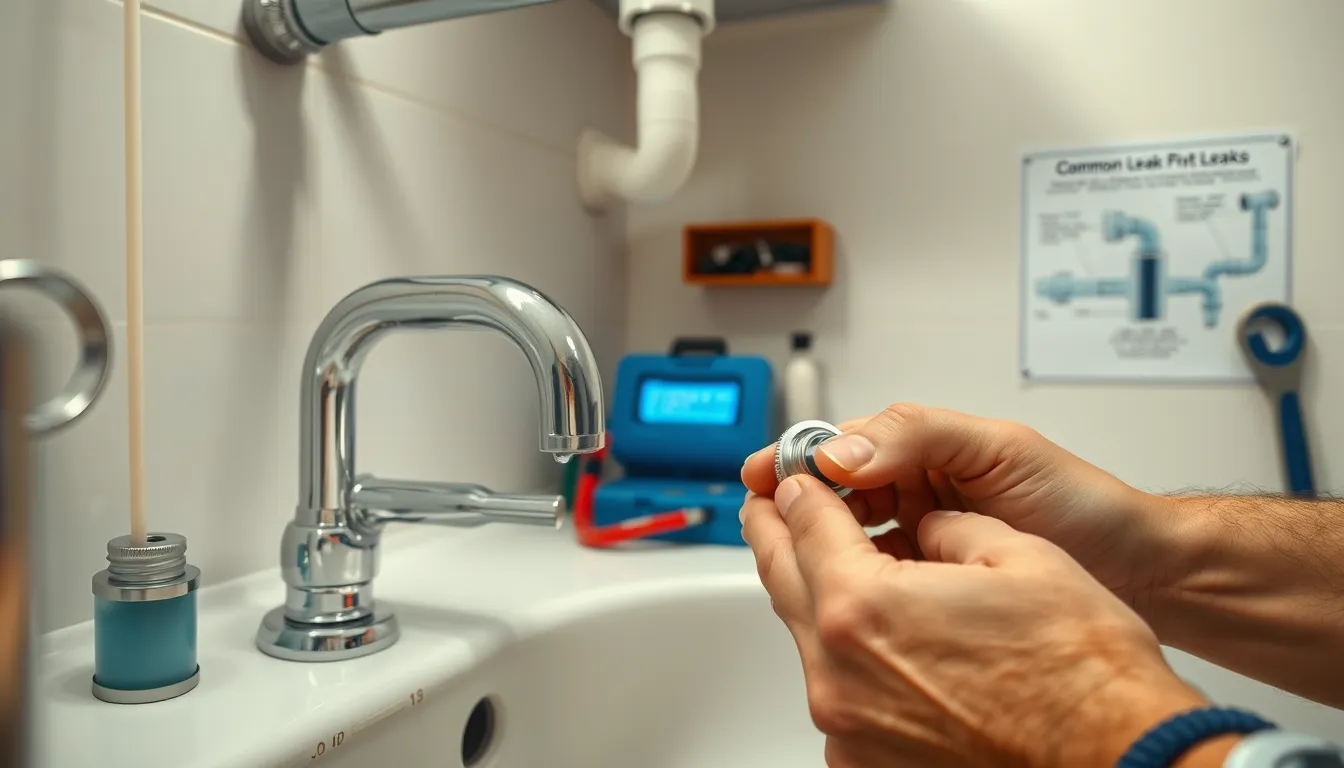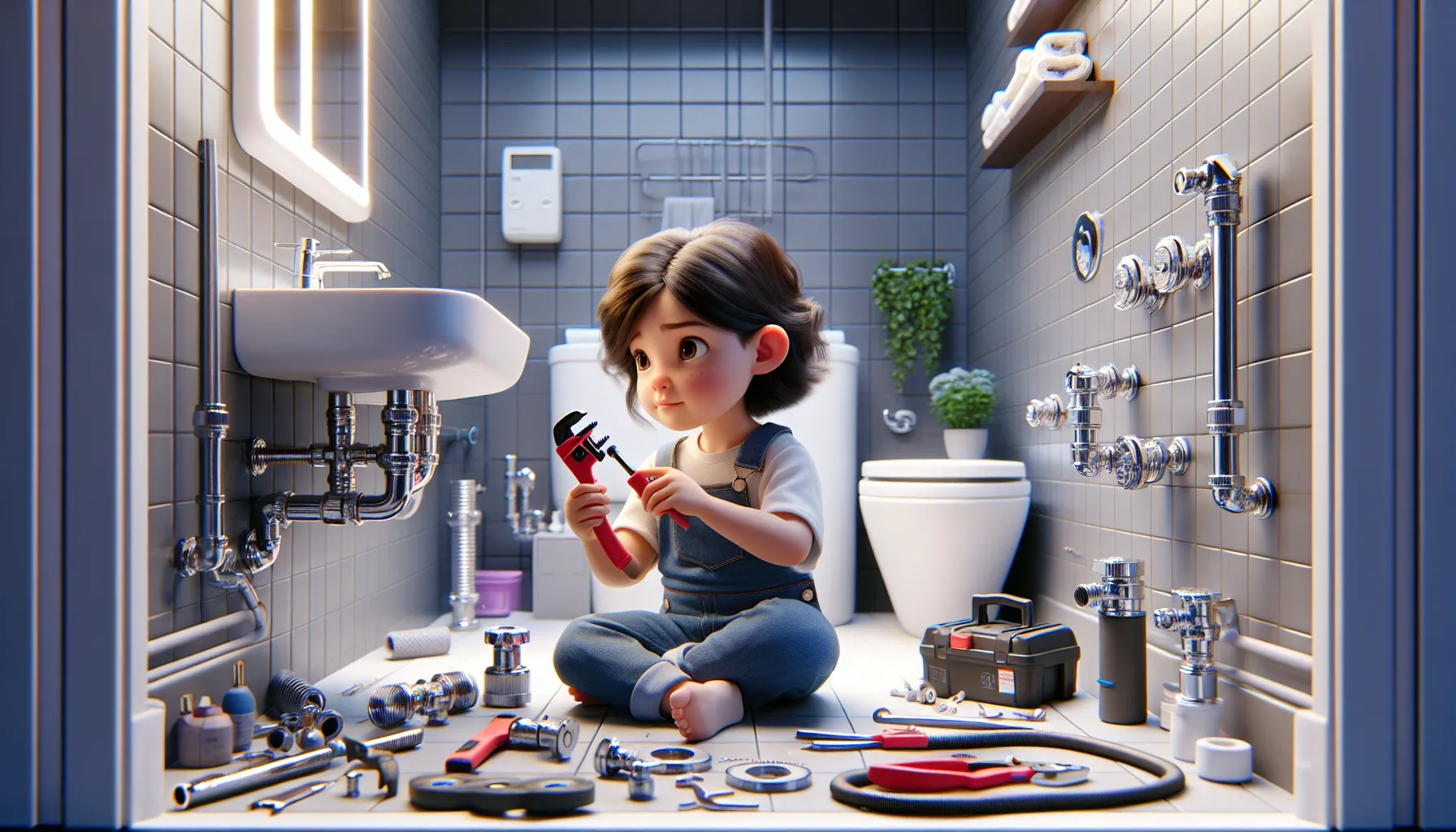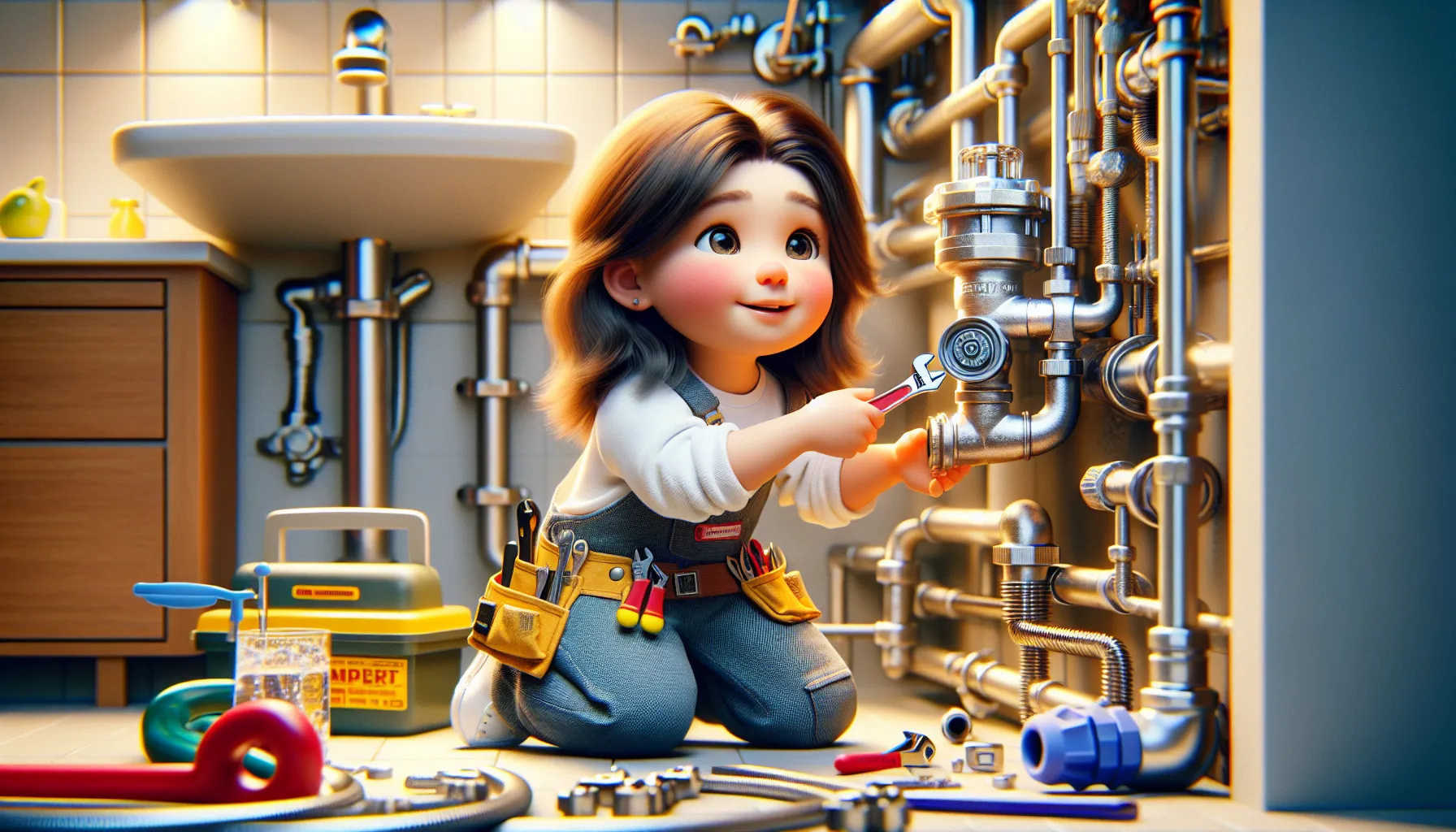Plumbing leaks are a common yet potentially devastating issue that homeowners face. These silent culprits can cause significant damage to your property, waste precious water resources, and lead to expensive repairs if left unchecked. Understanding the causes of plumbing leaks and how to prevent them is crucial for maintaining a healthy plumbing system and protecting your home.
In this comprehensive guide, we’ll delve deep into the world of plumbing leaks, exploring their common causes, how to identify them, and most importantly, how to prevent them from occurring. Whether you’re a new homeowner or a seasoned property manager, this information will help you safeguard your plumbing system and avoid costly water damage.
Common Causes of Plumbing Leaks
Corrosion: The Silent Destroyer
Corrosion is one of the leading causes of plumbing leaks, especially in older homes. This gradual process of material degradation can weaken pipes from the inside out, leading to pinhole leaks or even complete pipe failure.
Types of pipes prone to corrosion include:
- Galvanized steel pipes, common in homes built before the 1960s
- Copper pipes, particularly in areas with acidic water
Factors that can accelerate corrosion include:
- High water temperature
- Chemical imbalances in water supply
- Age of the plumbing system
To combat corrosion-related plumbing leaks, consider:
- Regular water quality testing
- Installing water softeners or pH neutralizers if necessary
- Replacing old, corroded pipes with modern, corrosion-resistant materials
High Water Pressure: Too Much of a Good Thing
While good water pressure is desirable for showers and cleaning, excessive pressure can be a major contributor to plumbing leaks. High water pressure puts undue stress on your entire plumbing system, leading to:
- Strained pipe joints
- Accelerated wear on fixtures and appliances
- Increased likelihood of leaks at weak points in the system
The ideal water pressure range for residential plumbing is between 40 and 60 psi (pounds per square inch). Anything consistently above 60 psi can lead to plumbing leaks over time.
To manage water pressure and prevent related plumbing leaks:
- Install a whole-house water pressure regulator
- Regularly check and maintain the pressure regulator
- Use a simple water pressure gauge to monitor your home’s pressure periodically
Clogged Drains: More Than Just an Inconvenience
While a clogged drain might seem like a minor nuisance, it can actually contribute to plumbing leaks in several ways:
- Increased pressure in pipes due to water backup
- Strain on pipe joints and seals
- Potential for pipes to crack or burst under pressure
Common causes of clogs that can lead to plumbing leaks include:
- Hair and soap scum buildup in bathroom drains
- Grease and food particles in kitchen sinks
- Foreign objects flushed down toilets
To prevent clogs and associated plumbing leaks:
- Use drain strainers in all sinks and showers
- Avoid pouring grease down kitchen drains
- Educate household members about what should and shouldn’t be flushed
Faulty Pipe Joints: The Weak Links
Pipe joints are often the most vulnerable points in a plumbing system and are frequent sources of plumbing leaks. These connections can fail due to:
- Poor initial installation
- Natural wear and tear over time
- Shifting or settling of the house foundation
Signs of joint-related plumbing leaks include:
- Visible corrosion or mineral buildup around connections
- Dampness or water stains near pipe joints
- Sudden drops in water pressure
To address and prevent joint-related plumbing leaks:
- Regularly inspect visible pipe joints for signs of wear
- Ensure any plumbing work is done by qualified professionals
- Consider repiping older sections of plumbing with modern, leak-resistant materials
Tree Root Intrusion: Nature’s Plumbing Nemesis
Tree roots can be a significant threat to your plumbing system, particularly sewer lines. As roots seek out moisture, they can infiltrate small cracks or joints in pipes, leading to severe plumbing leaks and blockages.
Pipes most vulnerable to root intrusion include:
- Clay pipes, common in older homes
- Concrete pipes with deteriorating joints
To prevent root-related plumbing leaks:
- Plan landscaping carefully, keeping trees away from known pipe locations
- Consider installing root barriers around existing trees near plumbing lines
- Use pipe materials resistant to root intrusion for any new installations or repairs
Frozen Pipes: Winter’s Plumbing Threat
In colder climates, frozen pipes are a major cause of plumbing leaks. When water freezes, it expands, putting immense pressure on pipes from the inside. This can cause pipes to crack or burst, leading to significant water damage when they thaw.
Areas most at risk for frozen pipes and subsequent plumbing leaks include:
- Exterior walls
- Unheated spaces like basements, attics, or crawl spaces
- Outdoor spigots and irrigation systems
To protect against freeze-related plumbing leaks:
- Insulate pipes in vulnerable areas
- Keep your home heated, even when away
- Allow faucets to drip during extreme cold spells
- Disconnect and drain outdoor hoses before winter
Identifying Plumbing Leaks
Early detection of plumbing leaks is crucial to prevent extensive damage. Here are key signs to watch for:
Visual Indicators
- Water stains on walls, ceilings, or floors
- Peeling paint or wallpaper
- Warped or buckled flooring
- Visible mold or mildew growth
Auditory Clues
- Dripping sounds when no water is running
- Rushing water sounds within walls
- Toilets that run intermittently without being used
Other Signs
- Unexplained increase in water bills
- Damp or musty odors in specific areas of the home
- Decreased water pressure in multiple fixtures
Regularly inspecting your home for these signs can help you catch plumbing leaks early, minimizing damage and repair costs.
Preventing Plumbing Leaks
Prevention is always better (and cheaper) than cure when it comes to plumbing leaks. Here are comprehensive strategies to keep your plumbing system leak-free:
Regular Inspections: Your First Line of Defense
Routine plumbing inspections can catch potential issues before they develop into full-blown plumbing leaks.
For DIY inspections:
- Check visible pipes for signs of corrosion, dampness, or damage
- Look for signs of moisture or water damage around fixtures and appliances
- Test water pressure with a simple gauge
For professional inspections:
- Schedule annual check-ups for older homes
- Have newer construction inspected every 2-3 years
- Always have a professional inspection before buying a new home
Proper Pipe Maintenance: Extending Plumbing Lifespan
Regular maintenance can significantly reduce the risk of plumbing leaks:
- Use natural drain cleaners (like baking soda and vinegar) monthly to prevent buildup
- Avoid harsh chemical cleaners that can corrode pipes
- Insulate pipes in unheated areas to prevent freezing
- Consider pipe relining for older systems to reinforce against leaks
Managing Water Pressure: Protecting Your Entire System
Proper water pressure management is crucial for preventing plumbing leaks:
- Install a whole-house water pressure regulator if municipal pressure is too high
- Regularly check and maintain the pressure regulator
- Use pressure-reducing valves on individual high-flow appliances if necessary
Addressing Clogs Promptly: Preventing Pressure Buildup
Quick action on clogs can prevent the strain that leads to plumbing leaks:
- Use a plunger or drain snake for minor clogs
- Consider enzymatic drain cleaners for regular maintenance
- Avoid using chemical drain cleaners, which can damage pipes
- For persistent clogs, call a professional to avoid damaging pipes
Protecting Pipes from Freezing: A Winter Priority
In colder climates, freeze protection is essential for preventing burst pipes and plumbing leaks:
- Use foam pipe insulation on exposed pipes
- Apply heat tape to particularly vulnerable areas
- Let faucets drip during extreme cold spells
- Keep cabinet doors open to allow warm air to circulate around pipes
Tree Root Management: Protecting Underground Pipes
Proper landscaping can help prevent root intrusion and associated plumbing leaks:
- Plant trees away from known sewer and water line locations
- Choose slow-growing, small-root species for planting near plumbing
- Install root barriers around existing trees near plumbing lines
- Consider regular sewer line inspections if you have mature trees on your property
When to Call a Professional Plumber
While many plumbing tasks can be DIY, some situations require professional help to prevent or address plumbing leaks:
Signs you should call a plumber:
- Persistent leaks despite DIY efforts
- Multiple clogged drains
- Sewage odors
- Significant decreases in water pressure
- Water heater issues
- Discolored water
Benefits of professional intervention for plumbing leaks include:
- Expertise in diagnosing complex issues
- Access to specialized tools and equipment
- Knowledge of local plumbing codes and regulations
- Ability to spot potential future problems
When choosing a plumber to address plumbing leaks:
- Look for licensed and insured professionals
- Check reviews and ask for references
- Get multiple quotes for large jobs
- Ask about warranties on work performed
FAQs
Q: How often should I inspect my plumbing for leaks?
A: Conduct a visual inspection at least once a month, and a more thorough check quarterly. Professional inspections are recommended annually, especially for older homes.
Q: Can small plumbing leaks fix themselves?
A: No, small leaks generally worsen over time. It’s best to address them promptly to prevent further damage.
Q: How can I tell if I have a hidden water leak?
A: Look for unexplained increases in your water bill, damp spots on walls or floors, or the sound of running water when no fixtures are in use. A significant drop in water pressure can also indicate a hidden leak.
Q: Are certain types of pipes more prone to leaks?
A: Yes, older materials like galvanized steel or polybutylene are more susceptible to leaks than modern materials like PEX or copper.
Q: How much water can a small leak waste?
A: Even a small leak can waste a significant amount of water. A faucet dripping once per second can waste over 3,000 gallons per year.
Conclusion: Staying Vigilant Against Plumbing Leaks
Understanding the causes of plumbing leaks and how to prevent them is crucial for maintaining a healthy home and avoiding costly repairs. By implementing regular inspections, proper maintenance, and taking preventive measures, you can significantly reduce the risk of plumbing leaks in your home.
Remember, proactive plumbing maintenance is always more cost-effective than reactive repairs. By staying vigilant and addressing potential issues early, you can ensure the longevity and efficiency of your plumbing system, saving water, money, and stress in the long run.
We encourage you to implement these strategies in your home maintenance routine. Share your experiences or tips for preventing plumbing leaks on social media to help others in your community maintain healthy plumbing systems. Your insights could save someone from a plumbing disaster!
By taking action now to prevent plumbing leaks, you’re not just protecting your home – you’re also contributing to water conservation efforts and promoting sustainable living practices. Start your leak prevention journey today, and enjoy the peace of mind that comes with a well-maintained plumbing system.



